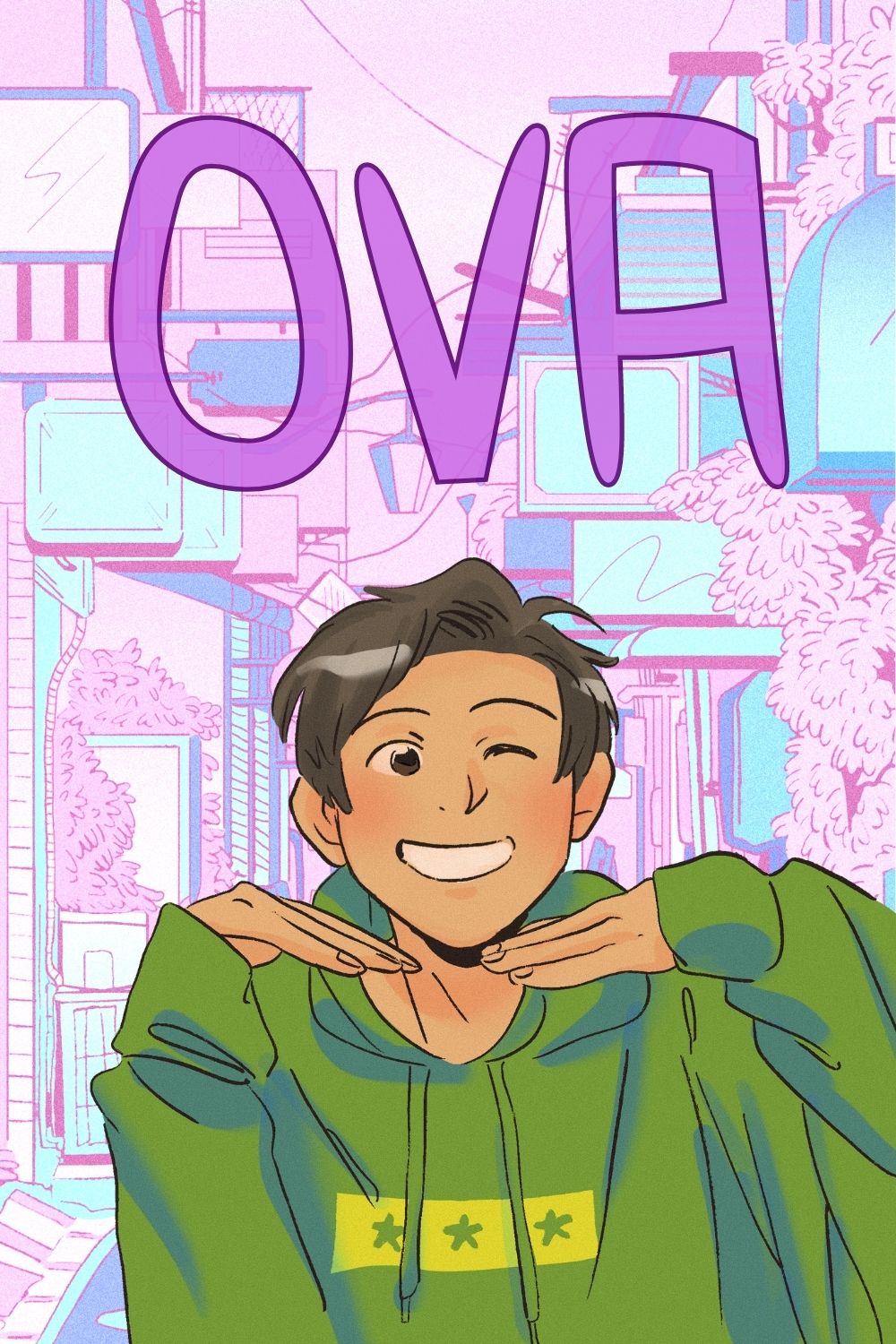OVA is a pretty familiar term to any serious anime fan. But what does it stand for and what does it actually refer to within the world of anime? How does it relate to other, similar things in the medium?
OVA, OAV, OAD, ONA, and specials—if you’ve ever been curious about what these different terms mean, you’ll find all you answers right here!
Starting from the top…
What is the meaning of OVA?
OVA stands for “Original Video Animation.” These are anime, either as stand-alone films or in series, that are released straight to VHS, DVD, or digital home streaming.
Ovas in a nutshell
In Japanese, OVAs are known as オリジナル・ビデオ・アニメーション, or orijinaru bideo animeshon. The equivalent thing in English would be something like “direct to video.”
When it comes to OVAs, they can take a few different forms.
Some are simply films, or short series released straight to some home media format, like Bluray, DVD, or VHS.
They might also be extra episodes, bundled with, for example, a set of DVDs you’ve already purchased.
Alternatively, you might find a special episode tucked away on a DVD in a copy of some manga you’ve picked up.
When it comes to the “special episode” OVA, they are usually not critical to the plot, but rather “just for fun.”
They provide extra characterization, or a side story, or something just to spend a little more time with beloved characters.
When the OVA is an actual, full blown, stand alone production it can range from D-movie bad, to some impressively produced feature animation.
Additionally, while it’s not common by any means, you will occasionally see complete series released as OVAs.
Two notable examples at Legend of the Galactic heroes—an OVA clocking in at an impressive 110 episodes!—and Gunbuster, with a more modest six episodes to its name.
Fun fact: The first OVA is considered to be Dallos (ダロス), a five episode science fiction work released in 1983. As VCRs spread into more Japanese homes, the direct to video market saw a huge boom.
The OVA scene was an important part of the anime industry from the mid-80s through the 90s.
However, late night anime broadcasts and, later, internet streaming gradually killed off much of the OVA industry.
That said, it’s still alive today, just not quite as prolific.
Define OAV
An OAV is the exact same thing as an OVA. That said, the term OAV is extremely uncommon nowadays. Comparing search results returns just shy of two million hits for OAV, versus well over one hundred million for OVA.
The abbreviation OAV was much more common early on.
However, Apparently the reason the industry (and therefore fandom) has chosen one over the other is because OAV was a bit confusing.
The AV part could easily be mistaken for “audio visual” or even something as risque as “adult video.”
For this reason, it is occasionally used for adult oriented direct to video animated products.
What is an OAD?
OAD stands for Original Animation Disc and is no different from an OVA, except that it refers to OAVs that are released in disc format, such as DVD or Bluray.
This term came into use around 2010 and while it’s not a replacement for the term OVA, it is used with some regularity to clarify the products you’re looking at.
What’s an ONA?
ONA stands for Original Net Animation. These are anime productions that are released directly to the internet, without being released to television or cinemas.
It was felt that another word was necessary to distinguish these internet productions from other OVAs since so many internet based OVAs are very different from their traditional OVA counterparts.
ONAs are often produced by fans or independent studios. They can be of a wide variety lengths and formats, due to the interactive nature of the internet.
What separates a “special” from an OVA?
Some OVAs are specials, but not all specials are OVAs. Specials are any sort of additional material made for an already existing, non-OVA, anime production.
If the special was never broadcast, then it gets classified as an OVA. If it was broadcast on TV (originally), then it’s just a regular anime.
What OVA to watch now?
Hit up your favorite search engine and look for some OVAs to check out.
The great thing about the OVA boom of the 80s and 90s is that you get that great nostalgic anime feel of those eras, but with more boundaries being pushed in the stories and artwork since the studios didn’t have to worry about being constrained by broadcast rules.
Find some best of, or top 10 lists and see what other have to recommend you, and then get watching!
If you’re an anime fan who’s never delved into the world of OVAs you may be surprised and entertained by what you find!
There’s a huge variance in the quality you’ll find in OVAs.
Some really hit that b-movie vibe, whereas other are able to truly shine, since the studios making them weren’t on time crunches, and could focus their money into fewer high quality episodes instead of trying to make it stretch cross a full season.
There’s many surprises to be had ahead!
And don’t forget to take this article as a guide to light the way as you sort your way through the OVA, OAV, ONA, and OAD world of anime!
Do you need to watch the OVAs to understand the full story?
Sometimes, watching an OVA isn’t necessary to understand the plotline to an anime.
OVAs are usually created as bonus content to the original series, and are not originally streamed on whichever platform that the rest of the episodes are.
For this reason, OVAs are often “filler” episodes that contain one-off stories such as beach episodes, hot springs episodes, or contain a side-quest.
In other cases, OVAs can be pretty important to the series! When in doubt, you can google whether or not they’re important- but beware of spoilers!
Can an OVA be multiple episodes long?
Some OVAs are single episode bonuses within DVDs of the original series. Other times, they are much longer- and very important to the series as a whole!
Occasionally, an entire series is an OVA- such as the case with Hellsing: Ultimate, known in Japanese as “HELLSING OVA”.
Hellsing: Ultimate went straight to DVD, unlike the original Hellsing anime series which was broadcast on TV. It was a re-creation of the entire series, made to be truer to the manga than the anime was.
Because of fewer broadcasting restrictions, it could be bloodier and more adult-oriented than the original anime.
Another popular example of long OVAs is in the series HunterxHunter. The original anime ended at episode 62, but due to fan’s disappointment with the anime series cutting off before the manga’s ending, multiple OVAs were added on.
Continuing where the original 1999 run of HunterxHunter left off, episodes 63-92 were released as OVAs. That’s a whopping 29 episodes!

“I’ve lived in Japan on-and-off for the last five years, travelling to (almost) every corner of the Land of the Rising sun. I’ve deepened my love of the language with big hauls from Sapporo book stores, by chatting in Shinjuku coffee shops, drinking in Osaka “snack bars,” exploring distant Okinawan islands, and hitching rides with monks in Aomori. Japanese is a wide and deep language, and I’m always eager to dive in deeper.”


